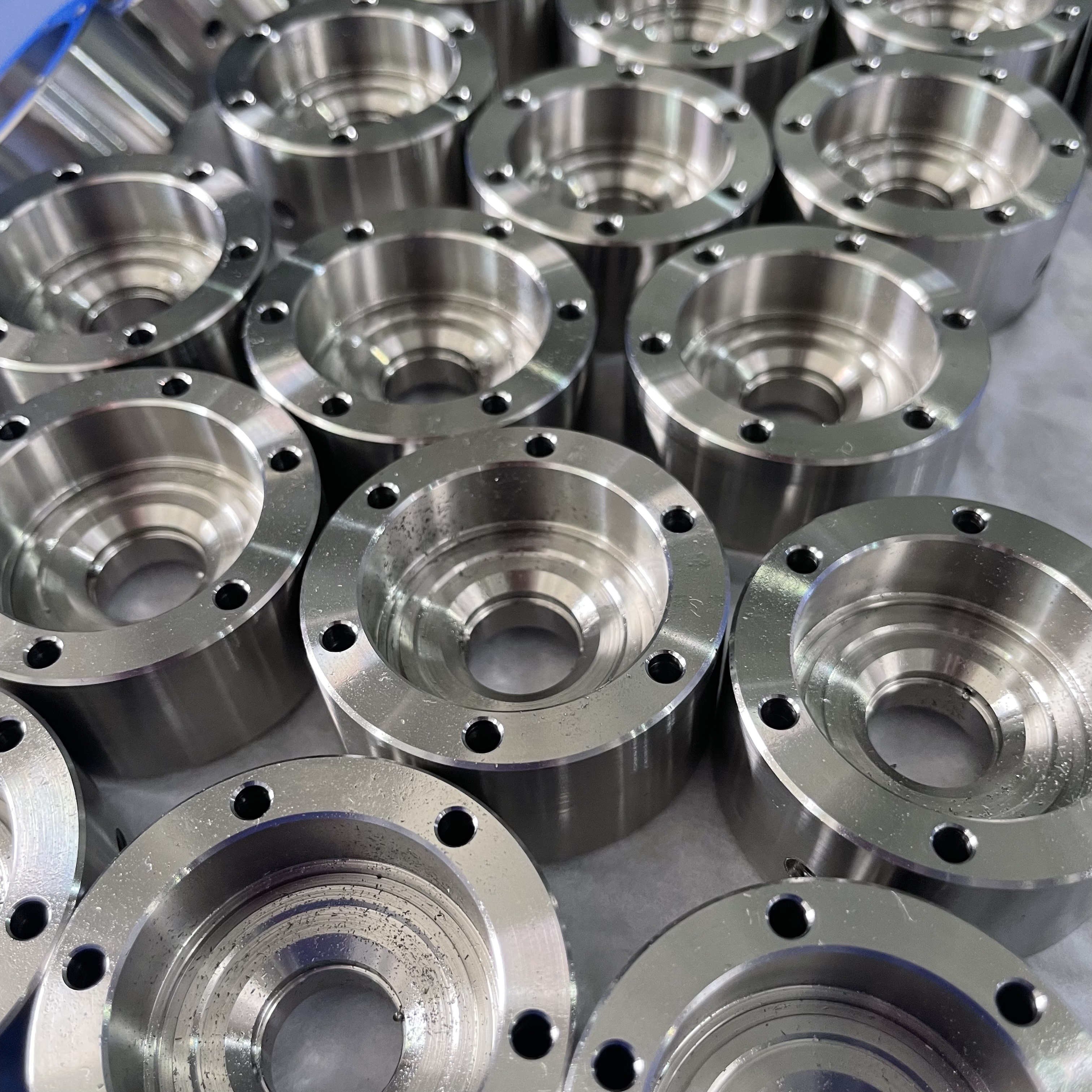CNC Machining Aluminium Alloy 6061

Aluminium Alloy 6061 stands out as a top choice for CNC Machining. This alloy is popular due to its excellent properties, including a remarkable strength-to-weight ratio, making it ideal for various applications. Its corrosion resistance ensures durability, even in harsh environments. Additionally, 6061 offers superior welding characteristics, allowing for the creation of intricate designs with ease. The clean surface finish it delivers enhances both the aesthetic and functional aspects of projects. By choosing 6061, you benefit from a versatile and cost-effective solution for your CNC Machining needs.
Understanding Aluminium Alloy 6061
Composition and Characteristics
Aluminium Alloy 6061 is a popular choice for many industries due to its unique composition and characteristics. You will find that this alloy contains several major alloying elements that contribute to its desirable properties.
Major Alloying Elements
In Aluminium Alloy 6061, the primary alloying elements include magnesium and silicon. These elements enhance the alloy's strength and improve its corrosion resistance. You will also notice that small amounts of copper, iron, and zinc are present, which further refine its mechanical properties.
Key Properties
When you work with 6061, you benefit from its excellent strength-to-weight ratio. This property makes it ideal for applications where weight is a critical factor. Additionally, the alloy exhibits good corrosion resistance, ensuring durability in various environments. Its ability to undergo heat treatment allows you to achieve different levels of hardness and strength, making it versatile for numerous applications.
Popularity in Various Industries
Aluminium Alloy 6061 has gained popularity across multiple industries due to its impressive properties. You will see its widespread use in sectors such as aerospace and automotive.
Aerospace Applications
In the aerospace industry, 6061 is highly valued for its lightweight nature and strength. You can find it in aircraft structures, where reducing weight without compromising strength is crucial. Its corrosion resistance also ensures longevity in harsh atmospheric conditions.
Automotive Uses
The automotive industry also benefits from the properties of Aluminium Alloy 6061. You will often see it used in the manufacturing of vehicle frames and components. Its strength and lightweight nature contribute to improved fuel efficiency and performance. Additionally, its excellent machinability allows for the production of complex parts with precision.
Machinability of Aluminium Alloy 6061
Why 6061 is Favored in CNC Machining
Aluminium Alloy 6061 stands out in CNC machining for several reasons. You will find it easy to machine, which makes it a preferred choice for many manufacturers.
Ease of Machining
When you work with 6061, you experience its excellent machinability firsthand. The alloy cuts smoothly, reducing the wear on tools and extending their lifespan. This ease of machining translates into faster production times and lower costs, making it an attractive option for businesses.
Surface Finish Quality
6061 aluminum provides a superior surface finish. You achieve a clean and smooth finish, which is crucial for both aesthetic and functional components. This quality ensures that the final product meets high standards without requiring extensive post-processing.
Comparison with Other Alloys
When comparing Aluminium Alloy 6061 with other alloys like 7075 and 2024, you notice distinct differences in their properties and applications.
6061 vs 7075
6061 and 7075 are both popular choices, but they serve different purposes. 6061 offers good formability and weldability, making it suitable for projects requiring intricate designs. In contrast, 7075 boasts higher strength, which is ideal for applications demanding maximum durability. However, 7075 is less machinable than 6061, which can lead to increased tool wear and longer machining times.
6061 vs 2024
When you compare 6061 with 2024, you see that 2024 excels in high-strength applications, particularly in the aerospace industry. However, 2024 lacks the corrosion resistance that 6061 provides. This makes 6061 a better choice for environments where exposure to moisture or chemicals is a concern. Additionally, 6061's machinability surpasses that of 2024, offering smoother operations and better surface finishes.
Physical and Mechanical Properties
Strength and Elasticity
Understanding the strength and elasticity of 6061 aluminum alloy is crucial for its application in various fields. You will find that these properties make it a versatile choice.
Tensile Strength
6061 aluminum offers impressive tensile strength. This property allows it to withstand significant stress without breaking. You can rely on it for projects that require durability and resilience. Its strength-to-weight ratio makes it ideal for applications where weight is a concern.
Modulus of Elasticity
The modulus of elasticity in 6061 aluminum provides insight into its flexibility. You will notice that it can bend under stress and return to its original shape. This elasticity is beneficial in applications requiring both strength and flexibility, such as in automotive and aerospace components.
Thermal Conductivity
Thermal conductivity is another essential aspect of 6061 aluminum. It affects how the material handles heat during machining and in its final application.
Heat Dissipation
6061 aluminum excels in heat dissipation. You will find that it efficiently transfers heat away from critical areas. This property is vital in applications like electronics, where overheating can cause damage. By using 6061, you ensure that components remain cool and functional.
Impact on Machining
The thermal properties of 6061 aluminum also impact machining. You will experience smoother operations as the material dissipates heat quickly. This reduces the risk of tool wear and extends tool life. Efficient heat management leads to better surface finishes and more precise machining results.
Corrosion Resistance and Welding Characteristics
Suitability for Harsh Environments
Corrosion Resistance
When you choose Aluminium Alloy 6061, you benefit from its excellent corrosion resistance. This property makes it suitable for use in harsh environments where exposure to moisture or chemicals is common. You will find that 6061 maintains its integrity over time, reducing the need for frequent replacements or repairs. Its ability to resist corrosion ensures that your projects remain durable and reliable, even in challenging conditions.
Anodizing Potential
Aluminium Alloy 6061 also offers significant anodizing potential. Anodizing enhances the natural oxide layer on the aluminum surface, providing additional protection against corrosion. You can achieve a variety of colors and finishes through anodizing, which adds aesthetic value to your projects. This process not only improves the appearance but also increases the lifespan of the components by offering an extra layer of defense against environmental factors.
Welding Capabilities
Weldability
You will appreciate the weldability of Aluminium Alloy 6061. This alloy allows for easy welding, making it a preferred choice for projects that require joining multiple components. Its ability to form strong welds without compromising structural integrity is a key advantage. You can rely on 6061 for creating complex designs that demand precise and robust connections.
Post-Weld Treatments
After welding, you may need to consider post-weld treatments to enhance the properties of Aluminium Alloy 6061. These treatments can include stress-relieving processes that reduce residual stresses and improve the overall strength of the welded joints. By applying appropriate post-weld treatments, you ensure that the final product meets the required standards for performance and durability. This step is crucial for maintaining the quality and longevity of your projects.
Technical Machining Parameters
Cutting Speed and Feed Rate
Recommended Cutting Speed
When machining Aluminium Alloy 6061, you should focus on the cutting speed to achieve optimal results. The recommended cutting speed ranges from 79.40 to 661.54 meters per minute. This range allows you to balance efficiency and tool longevity. By selecting the right speed, you ensure smooth operations and high-quality finishes.
Optimal Feed Rate
The feed rate plays a crucial role in machining. For 6061 aluminum, aim for a feed rate between 0.0508 and 0.2845 millimeters per revolution. This range helps you maintain precision while minimizing tool wear. Adjusting the feed rate according to your specific setup ensures consistent performance and reduces the risk of errors.
Tool Selection and Maintenance
Tool Material Choices
Choosing the right tool material is essential for machining 6061 aluminum. You should consider carbide tools for their durability and efficiency. Carbide tools withstand the demands of high-speed machining and provide excellent surface finishes. By selecting the appropriate tool material, you enhance productivity and extend tool life.
Tool Wear and Replacement
Monitoring tool wear is vital for maintaining quality. Regularly inspect your tools for signs of wear, such as dull edges or chipping. Replace worn tools promptly to avoid compromising the machining process. Keeping tools in optimal condition ensures precision and reduces downtime, leading to more efficient operations.
Aluminium Alloy 6061 offers you a versatile and cost-effective solution for CNC machining. Its excellent formability, weldability, and machinability make it a top choice across various industries. You benefit from its ability to withstand harsh environments while maintaining structural integrity.
Key Takeaway: 6061 aluminum stands out as a preferred material due to its remarkable properties and adaptability.
By choosing 6061, you ensure high-quality results in your projects, making it an invaluable asset in your manufacturing endeavors.
See Also
Comprehensive Overview: CNC Milling Aluminum Alloys 6061 & 7075
Insight into Aluminum Alloy 7075: CNC Milling Techniques and Uses
Discovering the Benefits of Aluminum CNC Milling Solutions
Essential Manual for CNC Lathe Operations on RC Car Aluminum Components
Achieving Expertise in CNC Milling for High-Quality Parts Production
About US
Follow Us
Your prototype holds unparalleled significance, and we deeply value its uniqueness. Collaborating with you during the preparation phase for running your prototype or parts is a commitment we gladly embrace. Whether it's a single part or a complex assembly, we are dedicated to selecting the optimal tools and pathways to bring your envisioned product to life.
At Precision Fab CNC Machining, we specialize in producing parts for prototypes, short runs, and high-volume production. Our prototyping machine capabilities extend across metal, plastic, and wood machining, with welding fabrication services available to complement and finalize your prototype if required.
Address
Address: Room320 10F, Building A,Nanshan international building, Dayawan District, Huizhou, Guangdong, 516001 China
Contacts
billy@timaycnc.com

